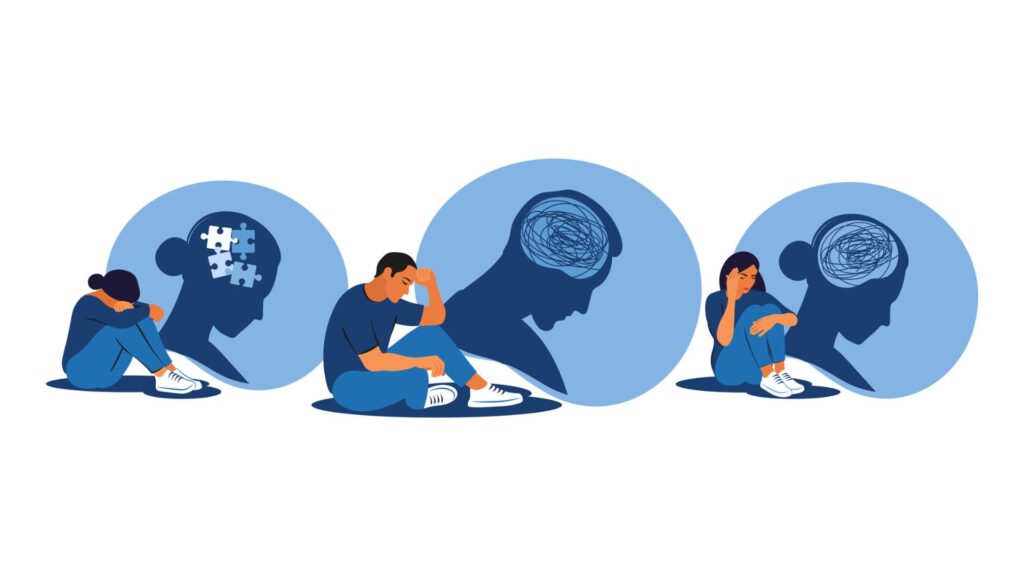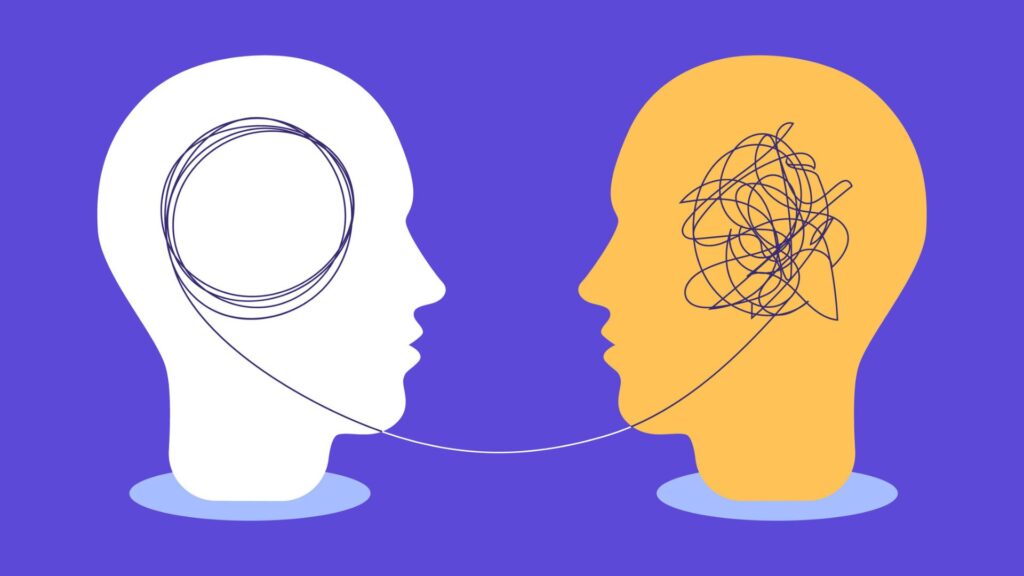
We spoke to Stan Gilmour, National Risk Technology Lead in Policing, Strategic Consultant, and Professor of Practice, about how early intervention could prevent children and young people with an Acquired Brain Injury (ABI) from coming into contact with the criminal justice system.
T2A has had a longstanding interest in Stan’s research into ABI, which can impact the process of becoming a fully mature adult1. That’s why it’s crucial to raise awareness of how it presents and impacts people’s behaviours.
The exact number of young adults in the justice system who have an ABI is unknown, but studies suggest that 49-72% of young people in custody have an ABI. Hence we can assume there’s a comparable percentage within the 18- to 25-year-old group.
ABI and criminal justice system
Stan Gilmour has recently started coordinating a project titled “Lost in Translation, Found in Data: Decoding the Neurobiological Undercurrents of Youth Criminalisation” that explores how children and young people with an ABI encounter the criminal justice system. The project is also investigating different approaches to neurodisability worldwide and how those approaches might inform practice here in the UK.
Awareness of ABI among criminal justice agencies has been patchy, but the minimal data available reveals that children and young people with an ABI are being let down by multiple agencies.
“The data tells us that there’s a vicious cycle between adverse childhood experiences, criminal justice contact and brain injury that is largely unaccommodated within statutory systems – not just criminal justice but within social support, healthcare and other wider systems that have prevention as part of their remit.”
An ABI can lead to behaviours that may increase the likelihood of becoming involved in the criminal justice system. Stan explains in more detail:
“Impulsivity and risk-taking behaviours can lead to criminal justice involvement, both of which are key features of ABI.
“When you ask what makes people behave in such a severely non-typical way, one answer is they’re criminals and the other answer is that a condition or disability – such as ABI – is affecting their behaviour.”
Early identification
Stan believes that children and young people with an ABI need to be identified as early as possible to prevent future involvement with the justice system. Ideally, this would take place during early years education, but the likelihood of an assessment at this time is heavily influenced by socio-economic factors.
“You go to school, and if your parents have the resources to make sure you’re identified as having additional needs, then you go on a special educational needs (SEN) programme. If you’re not identified, and that’s much more common in lower-income families, then you go on a behavioural and school mental health (SMH) programme. So lower-income kids are defined as badly behaved, while affluent kids are recognised to have SEN.
“If you have a behavioural diagnosis, you’re badly behaved, you’re a bad kid, and that label can stick with you. This can happen to the extent that your behaviour becomes anti-social and eventually becomes criminal. Therefore, your journey into criminalisation can start at a very early age.”
“With this behaviour comes a good deal of exclusion. Recent research shows that children with brain injuries who are excluded from school are criminalised earlier, and their offending behaviour will be more likely to persist into adulthood. This is one of many examples of how early intervention can deliver better outcomes and save money in the long term.”2
A whole system approach
Stan is a firm advocate of a whole system approach where data is routinely shared between all agencies that are involved in the care of children and young people, including local authorities, healthcare providers, social services, and education.
“We want to identify ways in which the data can be collected more routinely and made available for research and prevention in ways that are more repeatable.
“This would allow a whole system approach to prevention so that interventions can be put in place to stop people from falling out of education. If you’re excluded from school, then often by default you’re forced into inclusion in other organisations, some of them criminal, who may exploit your vulnerability.”
Stan believes that no one agency has the resources to tackle this issue, so data sharing needs to be improved to make early identification possible.
“When we speak to teachers about this, unless they have a personal interest, it’s often the first time they’ve heard about ABI. So how do we ensure teacher training programmes raise awareness of ABI indicators among teachers? And then how do you identify on a local level where teachers can go for support when they recognise those indicators in their pupils?”
“We don’t want teachers to be endlessly searching for that support, so it has to be available locally to meet the need. Of course, capacity building will be required to join those things up, raise awareness, and make it easy to contact providers.”

Effective use of data
Previously, Stan had looked into the feasibility of a digital register that could facilitate better data sharing – ensuring that children and young people receive effective, joined up support.
“I was working on this service directory approach where needs could be entered into a system and support identified locally. These systems exist, but the ones we were developing could also link into the history of the individual and their family to offer suggestions.
“That could be something like, ‘Maybe you should think about this intervention because this is going on in the background and you’ve just not joined the dots.’ It makes it easier to leverage data to prompt people to think wider than just behavioural issues and sanctions, and into needs-based support.
“It is a multi-stakeholder approach. It is a multi-agency approach. There’s no one organisation that has the knowledge or the capacity to deal with these issues on their own.”
According to Stan this approach would require a cultural shift within statutory services, many of which default to working in silos.
“Often you see those organisations working together, but apart, if you will. They’ll come to the table once a month, and they’ll discuss what they’ve been doing since the last meeting. But what they aren’t doing is working together. You wouldn’t necessarily need a meeting if they were working in effective partnerships because they would all be communicating with each other daily. I think the endeavour really is to get more collaborative and work together at the same table.”
Preventing harm before it occurs
The prevalence of ABI among the population is again significantly affected by socioeconomic factors.
“When you’re under the age of five, you’re five times more likely to pick up a brain injury if you’re in the five per cent of the population on the lowest income.”3
Without effective cross-agency relationships, children and young people at risk of brain injury may be identified far too late.
“Generally speaking, you only get to know that they’re at risk of harm when they’ve already been harmed. Is it good enough that your attention is drawn to a child once they’ve been severely assaulted or abused? That’s too late.
“There’s nothing to stop organisations from proactively sharing data to identify risk, other than their own ambition and courage. The Information Commissioner’s Office is very clear that we ought to be sharing information more widely to identify risk before harm occurs.”
To deliver the best outcomes for children and young people with an ABI, we need to know how many people have this disability. This will lead to a better understanding of the role ABI plays in health, wellbeing, and the development of maturity, which in the long run will encourage systems to adapt.
“When we have the data and the greater awareness amongst professionals about how ABI presents, we can start to change systems. That’s when we start to move away from behaviour policies at schools towards inclusion policies that accommodate everyone’s needs. That’s the end goal.”

Neurodiversity, neurodisability and the needs of young adults
Read more- Williams, W.H. (2012) Repairing Shattered Lives: Brain injury and its implications for criminal justice, London, Transition to Adulthood Alliance. ↩︎
- Kent H., Kirby A., Hogarth L., Leckie G., Cornish R. & Williams H., School to prison pipelines: Associations between school exclusion, neurodisability and age of first conviction in male prisoners, Forensic Science International: Mind and Law (2023) ↩︎
- Yates, P. J., Williams, W. H., Harris, A., Round, A. & Jenkins, R. An epidemiological study of head injuries in a UK population attending an emergency department. J. Neurol. Neurosurg. Psychiatry 77, 699 (2006) ↩︎
